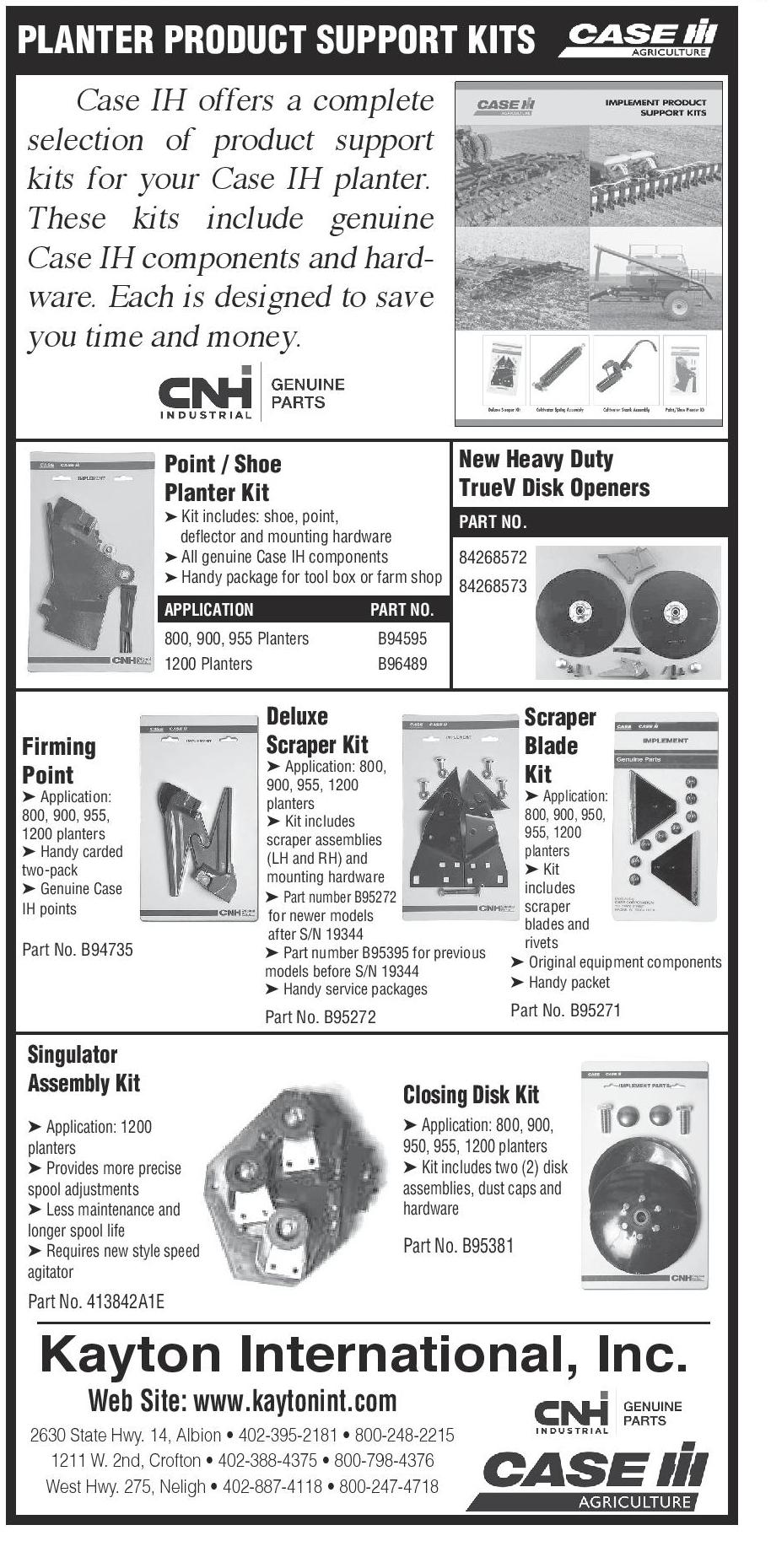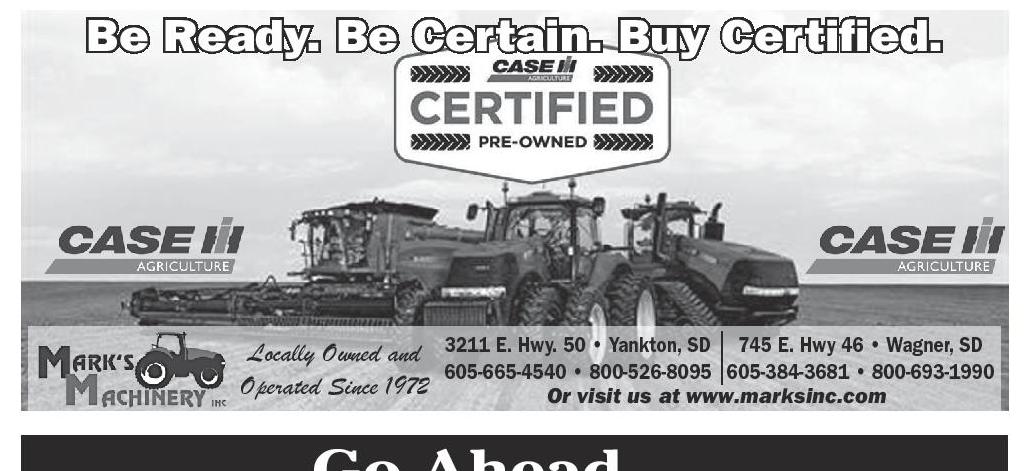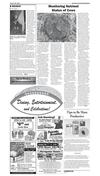020216_YKMV_A3.pdf







shop online at www.missourivalleyshopper.com
February 2, 2016 • Page 3
Understanding
Conservation Easements
Conservation easements
are a common, yet often
misunderstood, real estate
transaction tool. In writing
this column, it’s my intent to
provide factual information
regarding the rules and regulations that govern the use
of conservation easements
in South Dakota.
SDSU Extension takes no
formal position on conservation easements; rather
our goal is to provide the
reader with verifiable, fact
based information regarding
conservation easements in
South Dakota.
South Dakota Law on
Conservation Easements
Conservation easements
in South Dakota are generally defined and regulated
by SD Codified Law 1-19B-56
through 1-19B-60. Within
state law, conservation
easements are defined as
a “nonpossessory interest
of a holder in real property imposing limitations
or affirming obligations the
purposes of which include
retaining or protecting
natural or open-space values
of real property, assuring its
availability for agricultural,
forest, recreational, or openspace use, protecting natural
resources, maintaining or enhancing air or water quality,
or preserving the historical,
architectural, archaeological,
paleontological or cultural
aspects of real property...”
In plain language, conservation easements are
“created when a landowner
grants all or portions of his
or her property to a grantee
(holder) for conservation
purposes”
The holder of the
easement can be either a
government body empowered to hold an interest in
real property or a charitable
corporation, charitable association or charitable trust....
of which also holds the right
to enforcement. The holder
may also have the right to
transfer its rights of enforcement to another entity.
Establishment of Conservation Easements
Conservation easements
are established under a voluntary agreement between
the landowner and the entity
holding the easement.
Easements are conveyed
either by sale or donation,
and can be eligible for various tax incentives.
Conservation easements
have been utilized in South
Dakota since the 1930’s.
According to the South
Dakota Legislative Research
Council, the authority for
a landowner to convey a
conservation easement to a
qualified entity is a “well established property transaction mechanism that plays a
fundamental role in the real
estate industry” as well as
“a traditional real property
tool that allows a landowner
to specify how he will handle
his property.”
The document also
addresses the inherent constitutional rights associated
with ownership of private
property and the authority
to voluntarily make decisions regarding property,
stating that “any attempt to
restrict how an individual
handles his property could
be considered...a violation of
constitutional rights.”
Conservation easements
are tied to the land and the
terms of such can be:
1. Recorded directly in a
deed;
2. Recorded as a reference in a deed to a supporting easement document; or
3. Recorded as a standalone easement document.
Conservation easements
do not limit a landowner’s
ability to sell, mortgage or
transfer their property at
any time, but the conservation easement is attached to
the title of the property.
Terms of Conservation
Easements
The terms and conditions
of a conservation easement
are not restricted and are
subject to the mutual agreement of the grantor (the
landowner) and the grantee
(holder).
The terms of conservation easements can be
tailored to meet the needs
of the individual. Since
conservation easements are
voluntary a landowner or the
qualified grantee can decline
entering into the agreement
if he/she is not satisfied with
the terms governing use,
longevity, compensation,
monitoring, or other factors.
Generally, conservation
easements are categorized
as ‘negative easements.’
Legally, the term negative
is used because a landowner
who enters into a conservation easement voluntarily
restricts, prohibits or otherwise ‘negates’ certain uses
or management actions in
order to preserve certain
characteristics of the land
that are in the interest of the
holder.
Examples of conservation
easements in South Dakota
can range from protection of
cultural resources to restrictions on urban development
of farmland to protection of
certain wildlife habitats.
Longevity
In 2004, South Dakota’s
conservation easement law
was clarified by adding language stating, “The term of
the conservation easement
shall be established by the
parties to the easement.”
There are no restrictions
regarding the minimum or
maximum number of years
for a conservation easement
in South Dakota. However,
easement programs are often
fairly structured holders
may only offer certain options regarding longevity.
Some government agencies offer 30-year options
while other agencies and
non-government organizations (NGO’s) focus their
conservation easement programs on perpetual (forever)
conservation easements.
Tax Incentives
Under certain circumstances, grantors of conservation easements are eligible
for significant federal tax
incentives.
Section 170(h) of the
federal Internal Revenue
Service Tax Code requires a
conservation easement to be
donated and perpetual for
the landowner to receive federal income tax benefits. In
addition to income tax incentives, perpetual easements
are also eligible for certain
estate tax considerations.
The federal tax code
is complex. Landowners
interested in income tax and
estate planning implications
should consult with appropriate legal and financial
advisors.
Access to Private Land
under Conservation Easements
FEBRUARY SALE
Waterproof/Slip Resistant Ladies Boots
Boston Shoes to Boots
312 W. 3rd • Yankton • 665-9092
Be Ready. Be Certain. Buy Certified.
As stated previously,
terms of conservation
easements are negotiated
between the interested parties. Public access, while certainly allowable if the both
parties agree, is not required
by state or federal law and is
not an inherent component
of a conservation easement.
However, the easement
holder may require certain
access rights for its employees or agents for monitoring
easement compliance.
Landowners should be
proactive in understanding
the terms and conditions of
access related to the needs
of the easement holder.
Easement Responsibilities and Ethics
In their 2004 memorandum, the South Dakota
Legislative Research Council
suggested that landowners
considering a conservation
easement should consult
with family, professional
advisors and representatives
from the agency or NGO
involved.
Appropriate due diligence
and open communication
during the conservation
easement establishment
period and during any subsequent transfers of property
encumbered by conservation easements will ensure
full disclosure of pertinent
landowner management
responsibilities and holder
authority to the next generation of landowners.
Resources
There are a great many
resources for landowners to
research. A short internet
search will yield many
examples offered by various
organizations involved in
conservation easements.
niGrow
2016 Western
National Roundup
Cutline Pic 1 - Front (L-R): Aimee Ellinger (SDSU); Sarah
Hamner (SDSU); Kara Tesch (Codington); Coach Kaitlyn
Ringgenberg (Brown); Sarah Vos (Pennington); Coach
Kristen Gonsoir (Brown); Coach Molly Ringgenberg
(Brown); Coach Falyn Hogg (SDSU Extension 4-H Youth
Program Advisor); Coach Jodi Loehrer (SDSU Extension
4-H Youth Program Advisor). Middle (L-R): Julie Nelson
(Roberts); Grace Stein (Codington); Molly Walker (Codington); Sara Thyen (Codington); Morgan Janisch (Roberts); Sierra Goergen (Beadle); Valerie Moen (Roberts);
Kendra Currence (Roberts); Shaye Jungwirth (Potter);
Alexa Montagne (Union); Coach Bailey Ringgenberg
(SDSU). Back (L-R): Wyatt Stevens (Jerauld); Kyler
Johnson (Minnehaha); Megan Malsam (Brown); Marissa Woodring (Spink); Coach John Keimig (SDSU Extension 4-H Associate); Joellen Gonsoir (Brown); Cooper
Gordon (Spink); Derek Peterson (Roberts); Trey Wright
(Brown).
BROOKINGS, S.D. - Twenty South Dakota 4-H youth joined
the more than 1,000 youth from more than 32 states including
Alberta, Canada who attended the Western National Roundup
January 7-10, 2016 in Denver, Colo.
The Conference, now in its 96th year, is held annually in
early January in conjunction with the National Western Stock
Show. This year’s theme of “Mission ImPossible” was aimed
at leaving participants with the confidence that they have the
opportunity to create unique experiences and thrive in their
self-defined future through 4-H and FFA.
Both 4-H and FFA members between the ages of 14 and 19
have the opportunity to qualify for Roundup by winning their
home state’s contest or being chosen as a state delegate.
The competitions held at Western National Roundup
include horse and livestock judging, livestock quiz bowl, hippology, horse demonstrations and public speaking, parliamentary procedure, family consumer sciences presentations,
skill-a-thon, and bowl, consumer decision making, public
speaking prepared and impromptu, parliamentary procedure,
and meats identification.
Workshops are offered throughout the week which provides a learning experience for the youth exposing them to
topics ranging from communication and team building
n Roundup,
to leadership development. Page 4
Stock Up For The Big Game
Bush Light
Tall Boys
Bud Light
Products
16 Oz. Cans
18pks
18pks
13.99
$
605-665-7865 • 109 W. 3rd St. in Downtown Yankton
PLANTER PRODUCT SUPPORT KITS
Case IH offers a complete
selection of product support
kits for your Case IH planter.
These kits include genuine
Case IH components and hardware. Each is designed to save
you time and money.
New Heavy Duty
TrueV Disk Openers
Point / Shoe
Planter Kit
? Kit includes: shoe, point,
PART NO.
deflector and mounting hardware
? All genuine Case IH components
84268572
? Handy package for tool box or farm shop
84268573
APPLICATION
PART NO.
Locally Owned and 3211 E. Hwy. 50 • Yankton, SD 745 E. Hwy 46 • Wagner, SD
605-665-4540 • 800-526-8095 605-384-3681 • 800-693-1990
Operated Since 1972
Or visit us at www.marksinc.com
Go Ahead. . .
WALK ALL OVER US!
Are your floors damaged
after years of wear & tear?
Don’t wait for Spring! Call us today for a free in-home consultation. We are your one-stop shop
for replacing, renewing,
or refinishing your wood
floors, and our method
is minimally invasive.
Take advantage of our many other services:
• Installation, repair and
refinishing
• Bathroom remodels
• Kitchen remodels
• Interior Painting
• Wood cabinet finish, renewal
and color change
• Floor installation with tile,
laminates, etc.
• Home repairs
Kokesh Construction
605-660-5680
Locally Owned & Operated
11.99
$
Always LOW
Liquor Discounts!
800, 900, 955 Planters
B94595
1200 Planters
B96489
Firming
Point
Deluxe
Scraper Kit
Scraper
Blade
Kit
Part No. B94735
? Application: 800,
900, 955, 1200
planters
? Kit includes
scraper assemblies
(LH and RH) and
mounting hardware
? Part number B95272
for newer models
after S/N 19344
? Part number B95395 for previous
models before S/N 19344
? Handy service packages
? Application:
800, 900, 950,
955, 1200
planters
? Kit
includes
scraper
blades and
rivets
? Original equipment components
? Handy packet
Part No. B95272
? Application:
800, 900, 955,
1200 planters
? Handy carded
two-pack
? Genuine Case
IH points
Part No. B95271
Singulator
Assembly Kit
? Application: 1200
planters
? Provides more precise
spool adjustments
? Less maintenance and
longer spool life
? Requires new style speed
agitator
Closing Disk Kit
? Application: 800, 900,
950, 955, 1200 planters
? Kit includes two (2) disk
assemblies, dust caps and
hardware
Part No. B95381
Part No. 413842A1E
Kayton International, Inc.
Web Site: www.kaytonint.com
2630 State Hwy. 14, Albion • 402-395-2181 • 800-248-2215
1211 W. 2nd, Crofton • 402-388-4375 • 800-798-4376
West Hwy. 275, Neligh • 402-887-4118 • 800-247-4718






















 Previous Page
Previous Page





